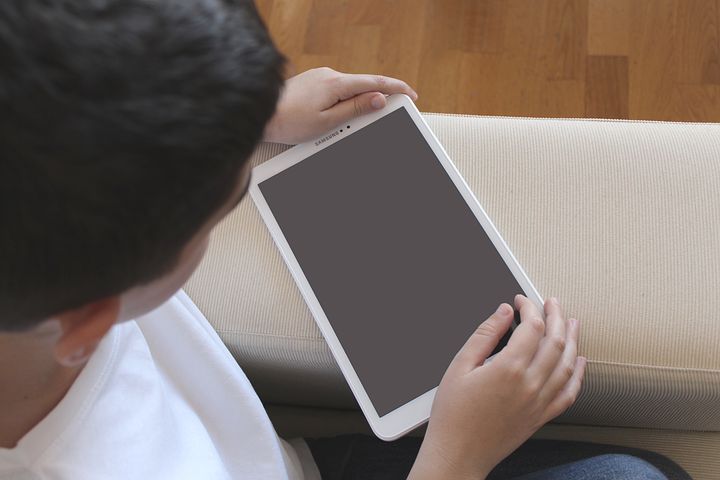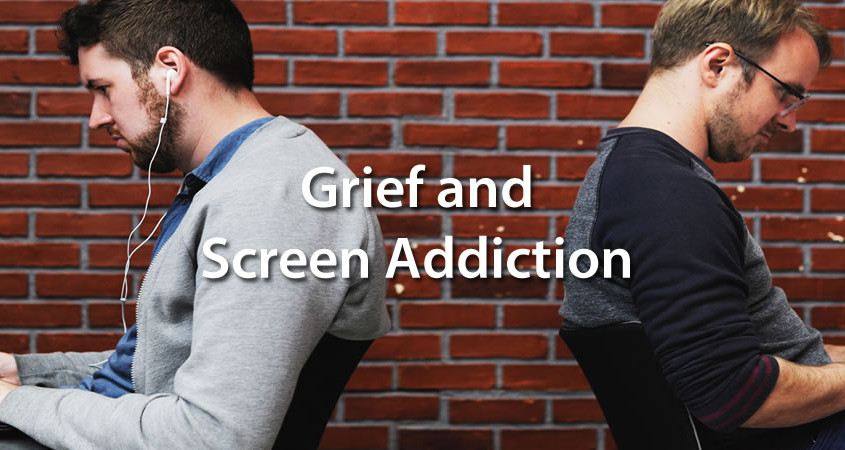Grief & Screen Addiction
For business and pleasure, screens have become central to our everyday existence. I know I’m dependent on screens for both functions, grateful that computer screens give me the freedom to work from home, send messages and receive responses quickly, to provide email support for bereaved or dying folk around Australia, and to write articles, books and blogs. I am able to stay in touch with people I miss – family members, and friends living overseas.
In ‘the olden days’ (as my grandchildren are wont to call them) I wrote letters, articles and books by hand. These days I am almost embarrassed to admit, I need to sit in front of a computer screen before the creative juices begin to flow. Somehow, for me, there’s a sense of freedom involved when clumsy phrases can be erased and quickly replaced, and the guiding hand of spellcheck hovers like an efficient secretary.
Like most other folk I send text messages but in moments of reflection, I wonder. I wonder how long we’ll remember ‘the good old days’ when conversations were carried out ‘face to face’, or via occasional phone calls; when letters were hand written; when we wrote cheques or handed over our hard earned cash to pay bills? All of those activities require thought, awareness of the what and why, and usually, contact with another living soul.
We depend on screens to keep the wheels of the business world turning at high speed, 24 hours a day, 7 days a week. Great when everything is functioning as intended, potentially disastrous when blips occur. Remember our unfounded millennium fears? Remember those bath tubs filled with water, and cupboards overflowing with canned food, just in case?
Computers allow us to shop on line, pay bills by direct debit, stay in touch with friends and colleagues around the world via email or text messages, and share the minutiae of our lives via face book. Screens also provide a variety of entertainment opportunities from the large version at movie theatres, to X Boxes, Play Stations, iphones, androids, and ipads.
We watch sat nav screens in our cars – a blessing for folk like me who have directional dyslexia. Screens play an important role in the lives of many people, and have many virtues. We can use screens to maintain connection with important others when we need to dispel feelings of loneliness and isolation; we can use them as a distraction from physical or emotional pain, or the monotony of essential tasks. Used wisely, they can serve us well. But there’s a down side. When we use screens unwisely we can move from functional dependence, to dysfunctional addiction.
Wise Use of Screens
Wisdom requires ‘use in moderation’. It involves taking regular breaks from screens, spending time in the fresh air, exercising and having important, face to face conversations with those we love. It involves being mindful of correct posture to avoid neck and back ache, and ensuring that our lives involve a variety of activities and connection with our community.
I’m fortunate that my health care ‘professional’ ensures that I follow the rules of wise screen use. Well, most of them anyway. My shoodle, Saffi, nudges me with intent at least every hour that I sit at the computer, directs me to the front door and out for a walk in the fresh air, insisting I stop every 20 yards to chat to every man, woman and dog in our local area. No chance of losing contact with my environment. The posture bit is left to me and in that aspect of screen use I can’t always claim virtue.

Unwise Use of Screens
Most of us would have examples of colleagues, family members and friends who use screens unwisely, like the families who live with grief after a relative or friend dies in a car accident caused by screen use while driving.
From a selfish perspective, it’s not much fun being in the presence of someone whose eyes never seem to leave the screen, who refuses all invitations to ‘smell the roses’, walk, talk, play, laugh – to be fully engaged with life. Their physical appearance often changes as a result of poor posture, lack of sunlight and exercise, and frequently, sleep deprivation. We can watch addiction developing, and feel concern, particularly when the problem affects young people in our care.
David Gillespie, author of ‘Teen Brain’, says that screens are designed for addiction because they provide a dopamine hit. He believes that boys are danger born and girls approval born.

His research suggests that games and messaging in particular can simulate approval or danger at high speed, changing neural pathways that have the potential to create lifetime vulnerability to addiction. He expresses concern that addiction to screens can create a gateway to addiction to almost anything. I think his book is worth a read.
Grief and Vulnerability to Screen Addiction
Grief is a painful and very lonely experience, affecting every aspect of our being. When we grieve we regress – that is, internally we feel much younger and more vulnerable than our chronological age. We feel different to other people, lose confidence in our ability, have difficulty concentrating or remembering, and may question many of our previous beliefs about life.
In that state of regression we become an exaggerated version of our former selves and use coping mechanisms that may have served us well in the past. Some may still be appropriate, others may not be in our best interests. Whoever we are, whatever we do, our desire is to eradicate or minimise pain. Many people somatise their emotional pain. That is, their body does their talking, producing pain, or other symptoms in the most vulnerable part of their being.
When that’s the case, adults may find themselves taking more analgesics, tranquillisers, anti-depressants, smoking, and drinking more alcohol. Some retreat into work, screen use or intense exercise. Adolescents may begin using substances, or engaging in, or increasing, risk taking behaviour to achieve the dopamine hit that David Gillespie refers to.
Many things in moderation provide temporary relief, but in the long term, don’t help us learn how to live with grief, how to build life around it. The potential for screen addiction when grief is new and raw is great., particularly for children and adolescents. If screen use was an important part of their life before they were confronted with grief, use is likely to become exaggerated now.
How Can We Prevent Screen Addiction in Grieving Young People or Minimise Harm From Current Use?
There are many things we can all do. First, resist the temptation to give ‘screens’ as a gift to a grieving young person. Their pain makes most of us feel helpless, and we long to help fill the empty place in their hearts. Screens won’t do it.

Instead, give them the gift of your presence. Spend time with them, in silence if they don’t want to talk, listening without judgement if they do. Help them find things to look forward to – each day, each week, each month. Do things with them rather than for them, but make sure your commitment is realistic enough to be sustained. If you set the bar too high and have to reduce contact, they will experience yet another loss.
Be their advocate when necessary – in the school system, with friends, within the family. And monitor their use of screens. Sit with them, encourage them to take breaks, do something active with them, help them perform tasks that make them feel competent. Show them a variety of ways to manage distress. Make your presence an invitation to remain connected to life.
Help for Helpers
If you need advice about a specific situation or special person, you can contact me by email.
Dianne McKissock OAM
NCCG Outreach Support Service
Email support for dying and bereaved people and anyone involved in their care





